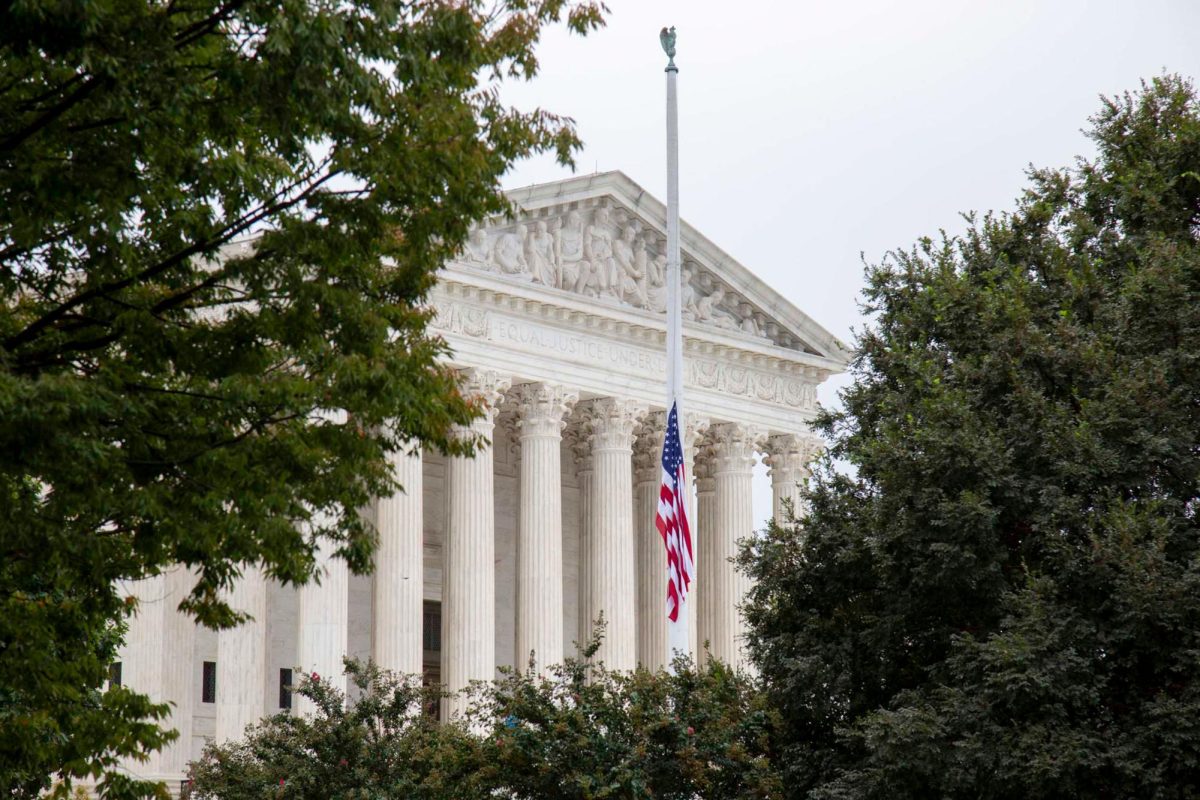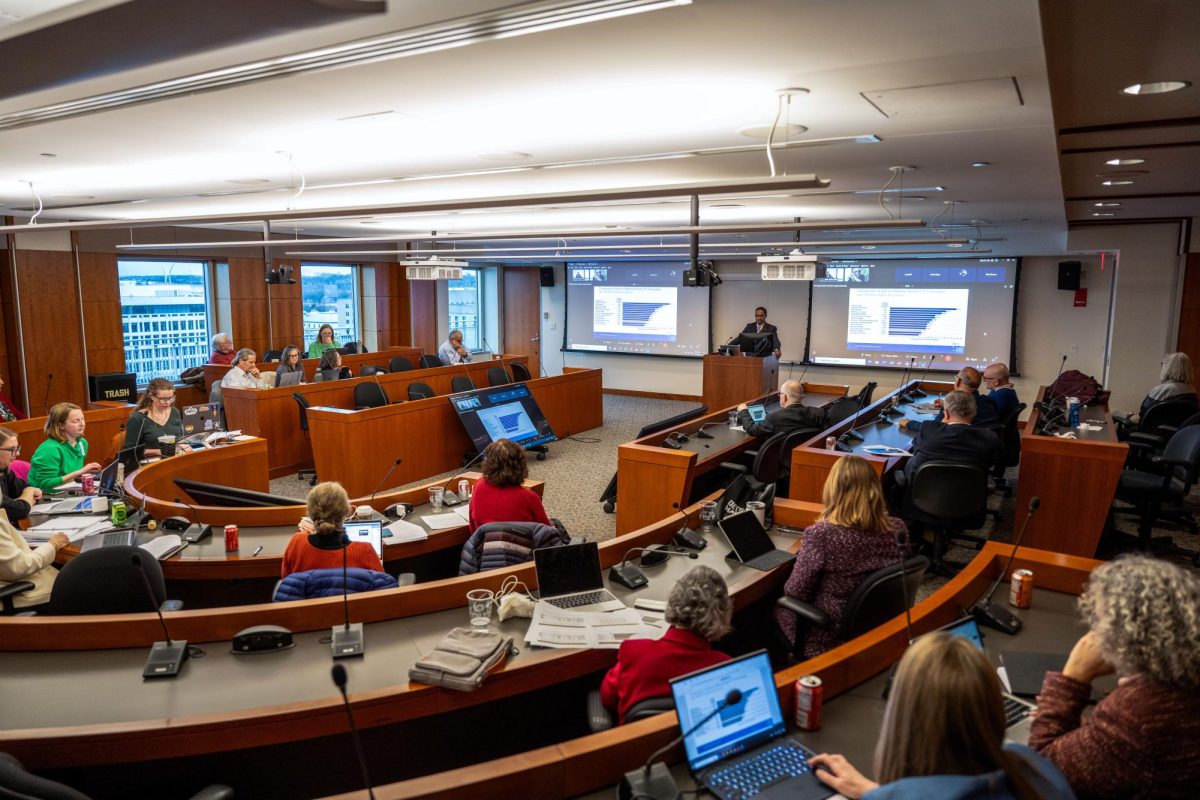A professor at the Milken Institute School of Public Health released a study earlier this month that found the COVID-19 pandemic limited available labor within the abortion and contraceptive services workforce.
Julia Strasser, the lead author of the study, said the research found the number of physicians working on abortion and contraceptive services declined from 2019 to 2021 while the number of clinicians, like nurse practitioners and physician assistants, took an “encouraging” rise. Strasser said her team found the number of procedural abortions decreased but medication abortions increased during the pandemic because of patients’ fear of catching COVID in medical offices.
Strasser, an assistant research professor of health policy and management and the director of the Jacobs Institute of Women’s Health in Milken, said the study examined how health workers continued caring for patients while facing public health challenges associated with COVID-19 and legal restrictions with the Supreme Court’s overturn of Roe v. Wade. The researchers started collecting data on abortion and contraceptive services from January of 2019 to December of 2021 and analyzed the collected data from this June to July, according to the study.
The study found little overlap between clinicians who provide care for pregnancy loss management, like miscarriages, and clinicians who provide abortion services. A larger overlap would indicate a larger number of abortion providers and suggest abortion care providers would be easier to find, according to the study.
The study found clinicians who provide care for pregnancy loss management rarely performed abortion services, which effectively limited the availability of abortion care from 2019 to 2021.
“The more that we can understand the workforce providing contraception care and abortion care as it’s changing in response to these major events, the better of an understanding that we can get about how people who need contraception and need abortion services can have access to the providers that can provide them,” Strasser said.
Strasser said contraceptive services were in high demand from March to May of 2020 while their availability declined when providers’ offices first shut down due to the onset of the pandemic, but access returned to pre-COVID levels in 2021. She said the increase in services in 2021 reflected a collective demand for services after a period of time where access was low.
Strasser said providers in states with abortion restrictions are “afraid” to provide abortion and medication for individuals dealing with a miscarriage because the term “abortion” encompasses medical procedures managing miscarriages or unintentional pregnancy loss in those states. She said the outcome of the Dobbs v. Jackson Women’s Organization decision threatens access to abortion care and forces patients to travel out of state while juggling childcare costs to undergo a “time-sensitive” procedure.
“The fewer people who can provide abortion care as a result of the Dobbs decision, the harder it is to access care that is needed in a timely manner,” Strasser said.
Experts in the field of public health and obstetrics and gynecology said the findings of the study suggest the reduction of health care workers during the pandemic and restrictions that the Dobbs decision triggered will force patients to travel to states with looser abortion laws for adequate care.
Leslie Kantor, a professor and chair of the department of urban global public health at the Rutgers School of Public Health, said the continued operation of abortion clinics during the start of the pandemic stirred debate about whether abortion care is essential health care. She said she supported clinics that kept their doors open during the pandemic because abortions are timely procedures that classify as essential health care.
Kantor, the former vice president of education at the Planned Parenthood Federation of America, said obstetrics and gynecology practitioners in reproductive care clinics are facing disruptions, including closures, in states where abortion laws are restrictive because of the Dobbs decision.
The reversal of Roe v. Wade triggered strict abortion laws to go into effect in 14 states, and courts have blocked trigger laws in seven states. At least 21 million people of childbearing age have lost access to safe abortions because of the implementation of these laws, according to the Centers for Disease Control and Prevention.
“We are living in two Americas,” Kantor said. “Access to comprehensive reproductive health care, including abortion, is expanding and getting more protected in a set of states, but then for about half the country, we’ve gone the other direction.”
Maureen Baldwin, an associate professor of obstetrics and gynecology at Oregon Health and Science University, said the results of Strasser’s study are “very troubling” because more clinicians are providing care for miscarriage procedures than abortions even though they involve the same skills. She said this disparity stems from health system restrictions, which limit access to induced abortion and force patients to travel to receive care.
Baldwin said OHSU, located in Oregon where abortion is legal without restrictions, often receives transfers from other hospitals in states where abortion is illegal and do not allow induced abortions as part of obstetric health care. She said her and her colleagues haves seen an 18 percent increase in abortions since the pandemic, which has “stressed” her medical system due to the increased volume of patients.
“This isn’t about providers making decisions to do induced abortions or not,” Baldwin said. “This is about health systems not allowing them to do all of the core services that their patients need.”








